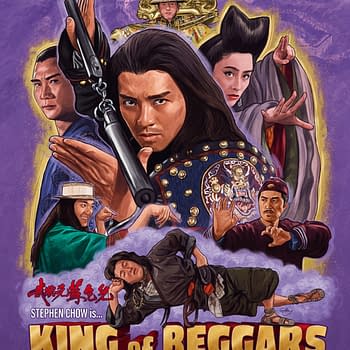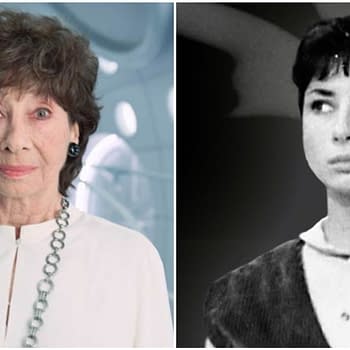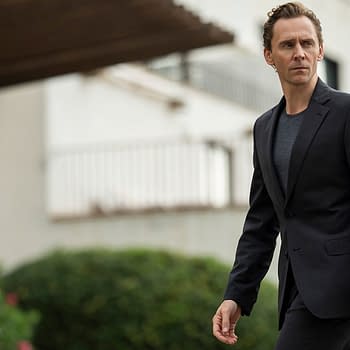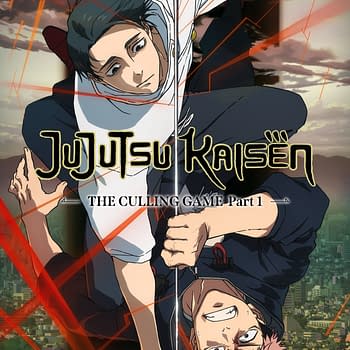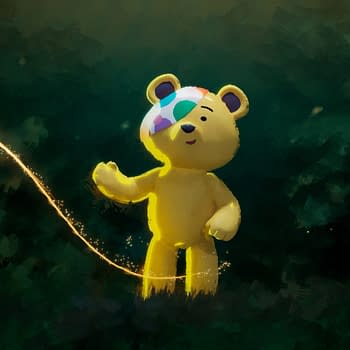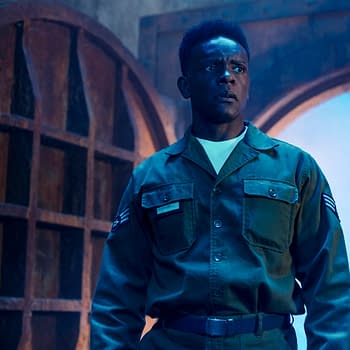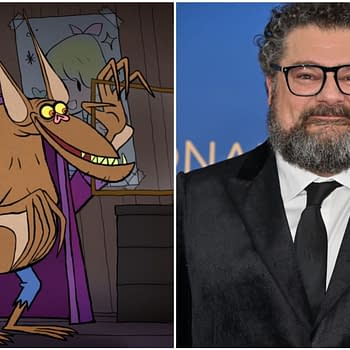Posted in: BBC, Disney+, Doctor Who, TV | Tagged: bbc, disney, doctor who, Millie Gibson, Ncuti Gatwa, russell t davies
Doctor Who: "Empire of Death": What You Missed, Got Wrong & Much More
From Russell T. Davies's fairytale tropes to "Mrs. Flood" clues and more, here's our deep dive into Doctor Who S01 finale, "Empire of Death."
This is not a review of the Doctor Who season finale, "Empire of Death," but a deep dive into the many components in it. There's a lot packed in it that is both upfront and semi-hidden, the callbacks, payoffs, tropes, and allusions to not only past continuity but other works beyond the series. Russell T. Davies doesn't write anything by accident. He's been at it long enough – over forty years – to know now. He appears to write himself and his hero into a corner just to see how he's going to get out of it because that's how writers challenge themselves, but Davies was always in control, whether we like his decisions or not. It's his game, and this is how he chooses to play it. He knows every trope and every trick in the screenwriter's toolbox, and we're going to unpick them.
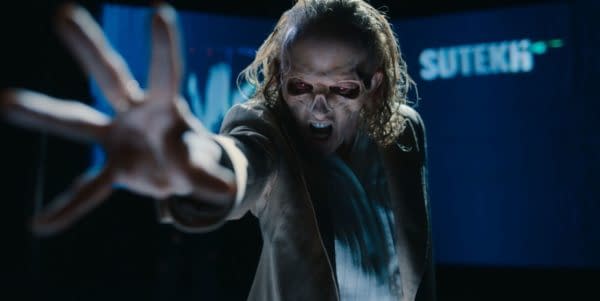
A Cliffhanger Deep Cut from Classic Doctor Who
"Empire of Death" kicks off with a subtle stylistic callback to the classic series – the "Previously On" repeats the final moments of the previous episode, which is something classic Doctor Who always begins each continuing episode with.
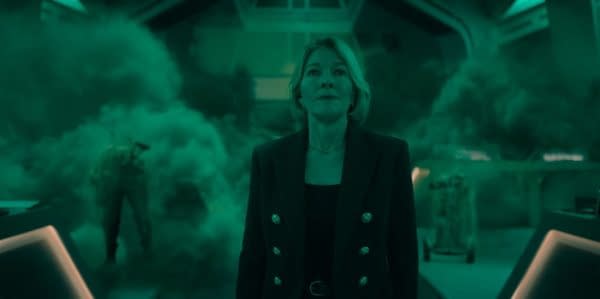
The Dusting Apocalypse
Sutekh immediately killing everyone in the world by turning them to dust is a quick establishment of the threat – the end of the world. And don't think Davies isn't aware that it's just like Thanos' snap in Avengers: Infinity War. This show is now streaming on Disney+ after all, along with the MCU films. It's a deliberately meta touch, and Doctor Who has always been meta. When a script kills one beloved character, it's a tragedy. When the story kills all the beloved characters at UNIT, that means they're going to be brought back to life at the end. When the world is destroyed at the beginning, it means The Doctor is going to restore it. That's the narrative promise.
And lo and behold, everyone lives at the end! That's a callback to "The Doctor Dances" back in 2005's season one. Even Colonel Chidozie is alive again. This might be the first time a Redshirt got un-Redshirted. (This brings up a major question: why is a colonel getting ordered to be a Redshirt? The whole point of being promoted to colonel is to not be a Redshirt anymore but someone who gets to order the Redshirts into action to get redshirted. What is up with UNIT's chain of command?)
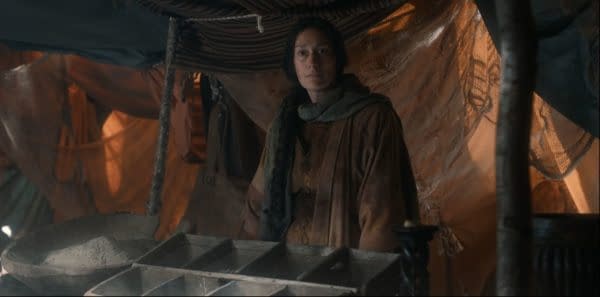
The Kind Woman with the Vital Object
The kind woman that Davies teased turns out to be not Susan, the Doctor's granddaughter, or any character from Doctor Who lore, but a nameless and ordinary woman running a stall, the only one left alive in her world. She's played by Sian Clifford, best known as the sister in Fleabag, and she conveys the air of a sad, tired woman who has lost everything, including her baby. She also reveals that the tragedy of Sutekh's death wave sweeps through history, having been seeded through every place and time the Doctor traveled through since "Pyramids of Mars" (yes, that's a retcon that opens up a whole can of worms and questions, but don't worry, it's all undone before the end of this episode, so don't strain your brain over it). She can't remember her name or the name of her planet, and she has even forgotten her baby is dead. That is the obscenity of Sutekh's gift of death.
The vital object turns out to be a spoon. This is part of Davies' core theme that ordinary people and objects are really the most important things in the universe, not some cosmic or hi-tech doodad. It's why the Doctor swears to bring her and her baby back with a spoon.
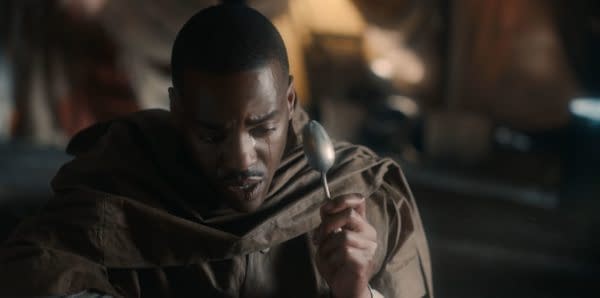
The Importance of Spoons in Doctor Who
Spoon shave been a major motif over the years in Doctor Who. The Seventh Doctor (Sylvester McCoy) plays spoons. The Thirteenth Doctor (Peter Capaldi) dueled Robin Hood with a spoon. The Thirteenth Doctor (Jodie Whittaker) built her sonic screwdriver out of spoons, circuitry, and an alien energy crystal. One last piece of metal the Doctor needs to power up the Memory TARDIS' portable screen to get the answers he and Ruby need to fight Sutekh.
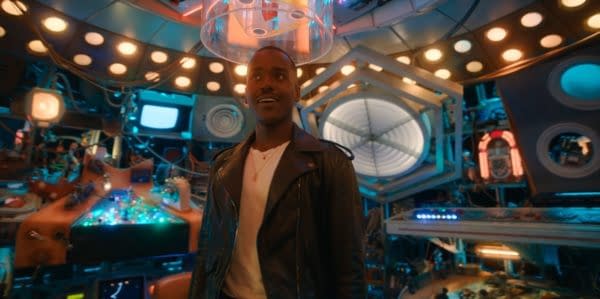
The Origin of "Tales of the Tardis": The Doctor Who Spinoff Series
The Memory TARDIS is created by memory, the memory of a time machine, a ghost of the TARDIS created by Ruby's memories. It's an elegant and poetic device that also becomes a metaphor for all our memories of Doctor Who, whether old or new fans. It is a depository of the companions' love of their time with the Doctor and every fan's love of the series. It is every TARDIS and every object – Mel cradles the Sixth Doctor's (Colin Baker) coat; the Thirteenth and Fourteenth Doctor's sonic screwdrivers are used as components to pilot the Memory TARDIS. A miniature of the Thirteenth Doctor's TARDIS console is positioned like a fireplace that the Doctor and Ruby huddle at as they recall "Pyramids of Mars" in the new episode of Tales of the TARDIS while on the run from Sutekh.
During the In Vision Commentary (which will be in the UK Blu-Ray/DVD release), Russell T. Davies said they cut a bit where after the Memory TARDIS lands in 2046, the Doctor kisses it goodbye and it dissolves, and Davies decided that the Memory TARDIS just drifts away into the vortex to become the star of the UK-exclusive Tales of the Tardis, recalling past Doctors and companions to recall their stories to sustain itself, living on their memories. Here's something to bear in mind: the Memory TARDIS, like the original one, remembers not only the past and present but also the future Doctors and companions.
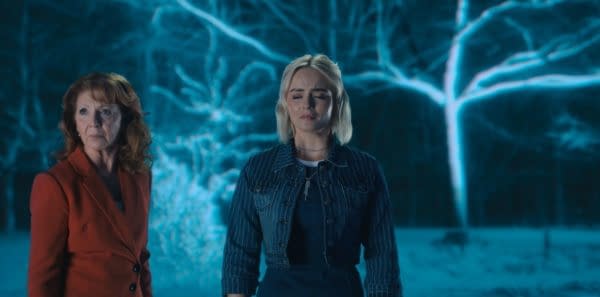
How Ruby Makes It Snow
Many viewers are wondering how Ruby can make it snow if she doesn't have any special powers. There's an explanation that's not spelled out, but you can work it out. The snow is the only memory she has from her infancy before she was adopted. It's part of her wish to know who her birth mother is. It's a fairytale trope, and it's magical realism. Magical realism is a subgenre in literary fiction established by Latin American novels in the 1980s where stories set in our reality have moments where something magical and unexplained comes into the world, usually a symbol or metaphor for their emotions or state of mind. Snow falls whenever Ruby's in a heightened emotional state that's linked to her wish to see her mother. It's as simple as that.
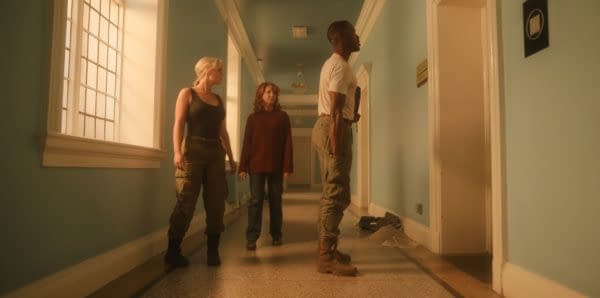
Is 2046 a Callback to a Wong Kar-Wai Movie?
The Doctor and Ruby go to the dead world of 2046 to retrieve records of Ruby's birth mother's DNA so that they can discover her identity. Is this some kind of callback to Hong Kong director Wong Kar-Wai's movie "2046"? That was a sprawling meta romance about unrequited love jumping between a heartbroken writer (Tony Leung Chiu-Wai) in the hotel room number 2046, where he last saw his lost love, composing a Science Fiction novel set in 2046 about unattainable love.
How Many British Prime Ministers Has the Doctor Brought Down?
Well, the first answer is, "Not enough." In real life, the last four Prime Ministers were incompetent idiots who ran the country into the ground. Anyway, he has brought down the Slitheens and their entire cabinet, Harriet Jones (Penelope Wilton) and now Roger ap Gwilliam (Aneurin Barnard), the latter in a story we'll probably never see. And if Davies' novelization of his first episode, "Rose," is canon, the Doctor was also unwittingly and partly responsible for an alien in the form of Boris Johnson rising to power.
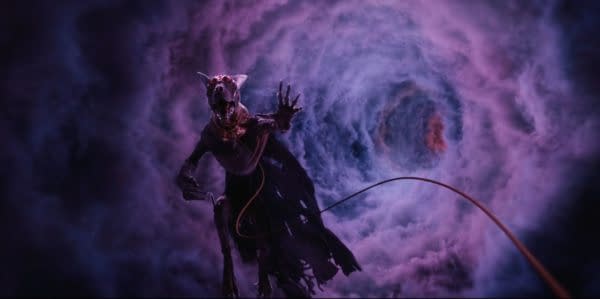
Good Doggies and Bad Doggies
The Doctor can revive the TARDIS from Sutekh's possession with a whistle. Is the TARDIS a good doggo now? Sutekh is definitely a bad dog. Bad Sutekh! Bad! No treats for you! The Doctor makes Sutekh go "walkies" by forcing him to wear a leash, dragging him out into the vortex, and dumping him to his death like a bad and dangerous dog. That's right, he puts down Sutekh for being a rabid dog. That's ridiculous and funny, and you can bet Davies knows that.
Seriously, though, the Doctor declares themselves a representation of Life who must kill a god of Death to bring back Life. That's a primal myth. This implies the Doctor is a God of Life, but they would never cop to that because of the weight and responsibility that would bring. The Doctor knows the weight of being the last of his kind to kill another being that is also the last of their kind. That is mythical poignance.

Everybody Lives!
This is a trope that goes all the way back to Steven Moffat's "The Doctor Dances" back in 2005. It's the fairytale ending. The Doctor is the wizard and literally plays God and brings everyone in the universe back to life. It's a series trope now, trotted out every now and then when the story calls for some hope rather than total bleakness. Even Susan Triad (Susan Twist), an innocent, gets to live on. After all, she's an idealist who has chosen to give her Linux-based operating system to everyone as open source, probably giving up her billions once her shareholders force her out of her company, but UNIT will probably employ her to handle their IT.
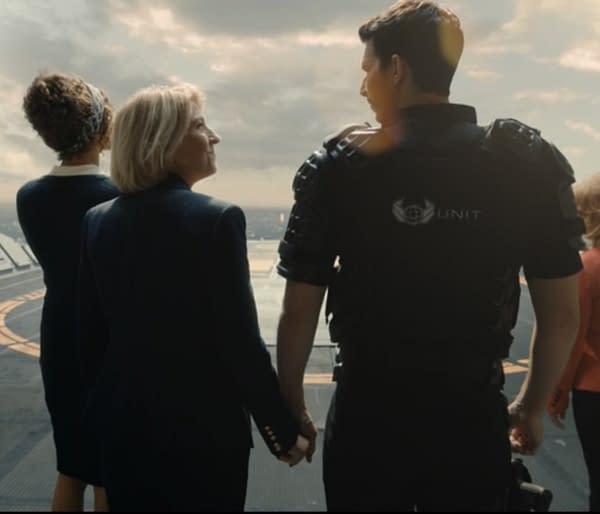
An Unexpected Romance
Are Kate Stewart (Jemma Redgrave) and Colonel Ibrahim (Alexander Devrient) an item? Davies says they are. Gasp! He's pushing a straight agenda! What is the world coming to? And isn't she his boss? Doesn't UNIT, like all military organisations, have a strict non-fraternisation rule? Or is UNIT very loosey-goosey with the rules? They already employ teenagers in dangerous situations in their ethically dubious Youth Training Program. Did they really equip a 13-year-old's Segway with machine guns? There are so many questions about UNIT's conduct here.
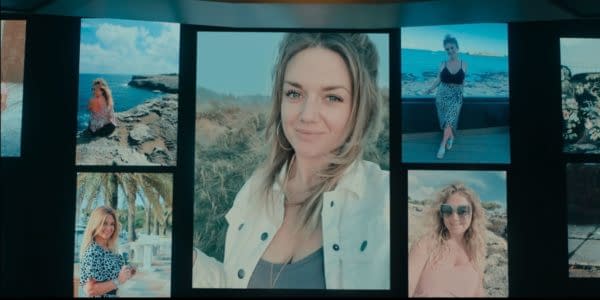
The Quiet Heroism of Ordinary People
Davies deliberately set up the expectation that the reveal of Ruby's mother's identity would be a major event in the season arc, and it became the McGuffin (a slang originally coined in Hitchcock movies), the thing everyone's after that drives a plot. It's so mystifying that it drives Sutekh crazy enough to delay killing them so he can find out how Ruby's mother could stay hidden from him. This buys the Doctor and Ruby time so they can find it and use it as bait to trap Sutekh.
Ruby's mother turns out not to be the Doctor's granddaughter or The Trickster or some alien princess or any god but a perfectly ordinary person. A teenage mother who left her baby at a church so she would be spared from an abusive household. That action ends up saving the entire universe from death. It's not a bait-and-switch. It's the entire point of the whole season. "Ordinary people matter" is a theme that's been a cornerstone of Davies's entire career for over forty years. He emphasized it back in his first season of the revived Doctor Who in 2005 in "Father's Day" written by Paul Cornell. Ordinary people, not kings and queens, are who the Doctor fights for.
And by the way, when Ruby's mother pointed at the road sign to name her, she was probably shouting her baby's name to the priest who opened the door. The video footage from the VHS tape had no audio on it. It still makes sense.
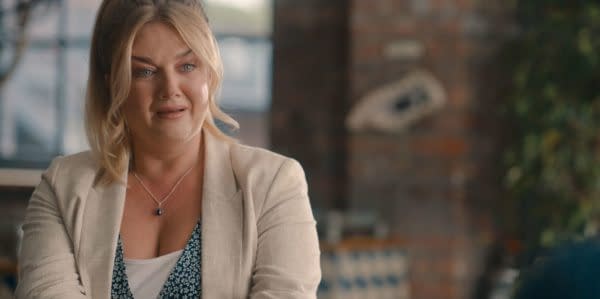
Davies said Ruby's parentage being ordinary is his reaction to Star Wars: The Last Jedi, where Rey's parentage is ordinary, and his disappointment in them retconning her into being a child of Palpatine. If Russell T. Davies really wanted to piss everyone off, he would have revealed that Ruby's birth mother was Rey Skywalker.
If you think an ordinary teenage single mother making sure her baby is safe by sacrificing ever knowing her is a let-down or boring or "nothing," then you need to examine your own priorities. Doctor Who has always been about using the fantastic to elevate the ordinary. It is ordinary people who make the world run, and it is ordinary people, not gods or superheroes, who grow up to write Doctor Who and play mythical heroes like the Avengers, the Doctor, and their companions.
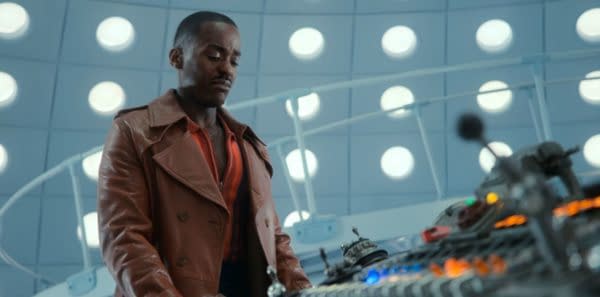
The True Meaning of the Timeless Child
Davies is finding new depth and layers to the Doctor in embracing the Timeless Child retcon that Chris Chibnall introduced. It's not about the plot but what it means emotionally for Davies. It makes the Doctor more than a friendly wizard but also a new version of Peter Pan, the original Timeless Child. The Doctor gathers orphans for companions and gives them a place to be, taking them on adventures that bring them joy, terror, and the whole gamut of life. Losing his companions is always his greatest heartbreak. And he always loses them, not necessarily to death, but when they find a family or home where they belong. The Doctor is Peter Pan, immortal and forever wandering. That's what being the Timeless Child really means. The Doctor's true legacy is not creating soldiers out of his companions but inspiring them to gather foundlings and orphans around them. Captain Jack (John Barrowman) gathers outsiders into Torchwood. Sarah Jane (Elizabeth Sladen) spent the rest of her life adopting a son and playing den mother to a band of kids who have since grown to become crusaders. Doctor Who is a fairytale, not a gritty Science Fiction epic, more than ever.

Finally, Just Who is Mrs. Flood?
Mrs. Flood (Anita Dobson) knows what the TARDIS is and who the Doctor is. She's not Susan. She's not the Rani. It's never the Rani! She's the unsolved mystery that will carry into next season. Mrs. Flood sends mixed signals. Is she a baddie? Why was she wearing the same clothes Clara (Jenna Coleman) was wearing when she died? Is she Clara? She did call the Doctor "clever boy," as Clara used to. Yet she talked of her plans to storm the kingdom of heaven and seize the throne of God. Is she a fallen angel like Lucifer? Why does she keep breaking the Fourth Wall? She seems to be the narrator of the series now as it becomes more of a fairytale than ever. She's wearing a white snow coat at the end to signal the Christmas Special. Is she a witch? In Disney and fairytales, good witches wear white. Her white winter coat is a harbinger of the Christmas Special.
There's always a twist at the end. But for now, this fairytale is over.
Doctor Who is now streaming globally outside the UK on Disney+.



